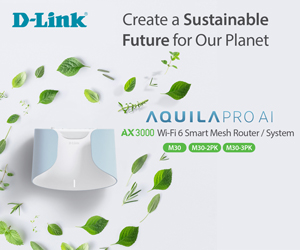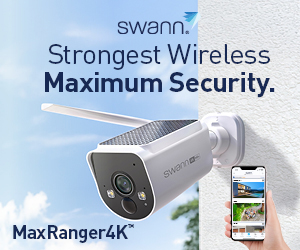Parents’ biggest mistake with back-to-school laptops 2023 is buying on price – the cheaper consumer laptops are not student-proof.
‘Education standard’ is a mix of portability, durability, battery life, fast Wi-Fi, practicality and warranty. From the school’s perspective, it is its curriculum software compatibility and management tools that monitor and set limits for in-school use.
Education computers are not about the bling – good looks, fancy keys, cool colours and desirability, and they need to be kid-proof to last the distance.
BYOD guidelines (based on NSW)
- Windows 11 or macOS (the school will tell you its preference)
- Laptop (clamshell or x360 hinge). The Microsoft Surface Pro or Go Tablet with the detachable keyboard qualifies. iPad with the magic keyboard does not
- Wi-Fi 5Ghz (usually dual-band Wi-Fi 5 AC or Wi-Fi 6)
- Minimum 10″ 1080p screen (larger 13.3 to 15.6″ strongly recommended)
- Minimum 4GB RAM (8 to 16GB recommended for heavy use)
- At least 128GB of storage (you can back up to a low-cost external drive)
- At least 4 hours of ‘screen-on’ use (8 hours is better)
- Webcam/microphone/speakers and a suitable combo headset
- USB-A 3.0 or USB-C 3.1/2 or later port
Practically the device should weigh under 1.5kg (14″) and 2kg (15″) plus any charger. We suggest a touch screen with active stylus support, as creative kids can use it for drawing and art.
The education institution usually supplies Microsoft 365 (formerly Office 365), including Outlook for email and Windows anti-virus software.
Many schools have commercial arrangements to supply a particular brand or model of laptop – call the school first because you may get a better deal.
The school’s preference is not necessarily what you want
Know that schools cannot force you to buy one operating system over another. All you need is to ensure the apps the school uses are comaptible.
Apple tends to be the province of private schools. The Apple range starts with the lowest cost 13″ MacBook Air, at about $1900, and a 13″ MacBook Pro is $2000 (both 2022 models). A 16″ MacBook Pro (2021 model) starts at around $3750.
Windows 11 comes on a huge variety of brands – ASUS, Acer, Dell, HP, Lenovo, and Microsoft, to name the better ones. Competition is good, and Windows is the most economical way to get a laptop. And business tends to use Windows, so it is good preparation for later work-life.
The general rule here is to look at
- Durability
- A minimum of 8GB RAM (16GB is better)
- A minimum of 256GB SSD (512GB is better)
- Intel 12th Generation Core i5 or i7
- At least a 13″ FHD 1902 x 1080 screen.
There are quite a few options ranging from around $1000. There is no issue buying an Intel 11th Gen Core processor to save money.
Tablets
Some schools prefer that students use a 10”+ tablet that supports a keyboard and stylus. You have a choice of an Apple iPad (iPadOS), Samsung Galaxy S Tab (Android), Lenovo (Android) or Microsoft Surface (Windows).
Apple iPad 64/128GB starts from $799/999, plus the Magic Keyboard is $399, and Apple Pencil is $159.

Samsung Galaxy Tab S8 11”, 128/256GB starts at $1099/1249, but you can spend up to $1999 for the 12.4” Ultra. A keyboard/trackpad costs $359, and the S Pen is included.

Lenovo has the 11” 2K Tab P11 Plus at $499 and the Yoga Tab 11 2K at $549. It has a P12 Pro at $999, a 12.6” 2K screen, and a potent Qualcomm SD870 processor.
The critical issue here is that the Apps recommended by the school run on whichever operating system you select. Again don’t be coerced to buy Apple if Android does what you want.
And while tablets are nice, they can cost far more than a touch-screen Windows laptop (note that Macs are not touch-screen).
Chromebooks
Chromebooks do most things in the cloud and need internet connectivity. Most schools do not allow them, so don’t go down this path unless you have to.
Microsoft Surface Laptop, Pro and Go
Microsoft Surface Go 3 – a little Windows tablet is a 10″ tablet with an optional detachable keyboard. It is perfect for Years 5-7 and has a touch screen, and can charge via USB-C (see ‘At home’ below). It costs $849 (8/128GB), and Microsoft offers student, parent and teacher discounts.
Microsoft Surface Pro 9 2022 – the beat goes on is a commercial-grade Intel Evo tablet with a detachable keyboard. It has a 13″ touch screen, it is ultra-light and portable, yet it is commercial grade and can drive dual 4K@60Hz monitors and more via its Thunderbolt 4 ports (dock or dongle required). The i5/8/128GB is $1649, and the i7/16/256GB is $2549. The keyboard is $259.95, and an optional Slim Pen Stylus is $170. This is pretty well the perfect Grade 8-12 hybrid.
The 13.5″ Surface Laptop 5 (from $1474) and the 15″ (starting at $1778) are excellent EVO class clamshell-style laptops. Read: Microsoft Surface Laptop 5 2022 – minor update to Laptop 4 (review)




Which back-to-school laptops 2023 to buy – our picks
Year 5-7
Durability is the key here, as kids don’t necessarily understand the need to look after things. For example, look for MIL-STD 810H devices with rubber bumper edges. But spend your money wisely – $500 will get what you need (Dynabook E10). A year 5-7 notebook is not suitable for grades 8-12.

Year 8-12
This is hard as you want a notebook that will last four years of reliable and changing use. These must endure millions of keystrokes (make sure the letters are injection moulded through the keycap – not stick-on lettering decals); daily recharging (more than 800 battery charge cycles when most batteries only have 500 charge cycles); the screen is large enough for creative use (a.k.a. Adobe Creative Suite), and you may need extended screen-on battery time for all-day use.
In 2023 look for an 11th or 12th Generation, Intel Core, EVO class laptop with a minimum screen size of 13” and preferably 15”, 8GB RAM (preferably 16GB), 256GB SSD (preferably 512GB) and all important durability.

It may pay you to look at business models like the Microsoft Surface, HP Spectra or EliteBook (not Pavilion or Envy) and similar standards from the rest.
At home
The computer’s life does not finish at school. Kids will invariably use it for many more hours at home for work and play.
Internet access.
Typical NBN plans start from $69 (25/10Mbps) for unlimited data, but if you have multiple users, you may need to step up to 50/20 ($79) or 100/20 ($99). You can’t go past Aussie Broadband for reliability. It has an Australian call centre with people who want to help.
Monitor or two
Make sure you have a decent 27″ or larger 1920 x 1080 (or 2/4K), 16:9 monitor (HDMI connection) – Prices start from under $300.

Teach the kids to type – a skill for life
Get a proper typist’s mechanical keyboard with injection moulded letters and keys with a decent throw – (not laptop membrane chiclet-style). Why mechanical? These have a 5mm or more throw, haptic feedback, making it easier and faster for students to type long assignments. You cannot go past the LOGITECH MX Mechanical full-size keyboard with Clicky or Tactile keys.

A classic two-button mouse starts from under $10 (cabled and optical), and wireless (USB-A dongle) is slightly less. Bluetooth mice begin at around $50. Don’t buy sculptured or odd-shaped mice.
A big enough desk with room for a printer
The desk needs at least 1200 (wide) x 600mm (deep) and 800mm (high), and it is nice if it has an L-shaped return or a three-draw filing cabinet for more desk space for that all-important printer.

A posture-correct chair
A proper ergonomic typist’s chair with good back support starts at $200 – don’t get ones with armrests. Do not buy a cheap dining chair – your child’s posture and back are at stake.

Task lighting
Task lighting (over the desk) is better than glary room lighting. The Dyson LightCycle ($799) is superb if you want to spoil them. If you don’t have the cash to splash, Mercator has some good LED Task Lamps at <$100.


Printer and scanner
A printer is now more the on-and-off-ramp to the internet. It should have an auto-document feed (not a flatbed) scanner (called an MFP or Multi-function printer). These days, students don’t print many pages (most work uses email). So, the argument for spending more to get a more economical ink-tank printer is pretty irrelevant. You can get an MFP, all-in-one, single cartridge tricolour for about $80 but beware; the ink costs are horrific – between 20-40 cents per colour page. Economical refillable ink tank printers start around $450 from Brother (InkVestment), Canon (MegaTank), Epson (EcoTank), and HP (Smart Tank) can reduce print costs to <1 cent mono and <10 cents colour.

A power source
Now one other trick. Most laptops now support USB-C upstream charging – not just a heavy ‘charging brick’. Get a lightweight 65W (or more) USB-C GaN fast charger to go in the backpack. Leave the brick at home.


Docks
If your needs are simple – one monitor and a few USB ports – most laptops support USB-C 3.1/3.2 Gen 2 ‘dongles’.
If your laptop has Thunderbolt ports and you want dual monitors, more ports, and upstream charging, the Plugable TBT3 Thunderbolt 3/4 docking station range – UDZ-96W, UDC3-9… are your answer.


Hardship
If your child requires a laptop for school and you can’t afford one, most schools have hardship assistance via rentals or even provide low-cost or free used laptops. Some organisations offer no or low-interest loans under the NILS scheme
Or try your local charity and see if they have a decent second-hand notebook. However, you may need to buy the software.
Cybershack view – The best back-to-school laptops 2023 are ones you can afford
If you can’t spend $500+ on a year 5-7 laptop or $1000-2000 for years 8-12, look for low-cost Windows laptops running older Intel Pentium or AMD 3-series and Ryzen 5 processors starting from $500 to $1000. Look for the best keyboard (definitely no decal letters), 4/128GB, and a 1920×1080 screen. But it is always best to buy business-grade as these should last the distance.
Of course, the computer is just the start. As you have seen, you can easily spend twice that to set things up properly.
back-to-school laptops 2023, back-to-school laptops 2023, back-to-school laptops 2023










Comments